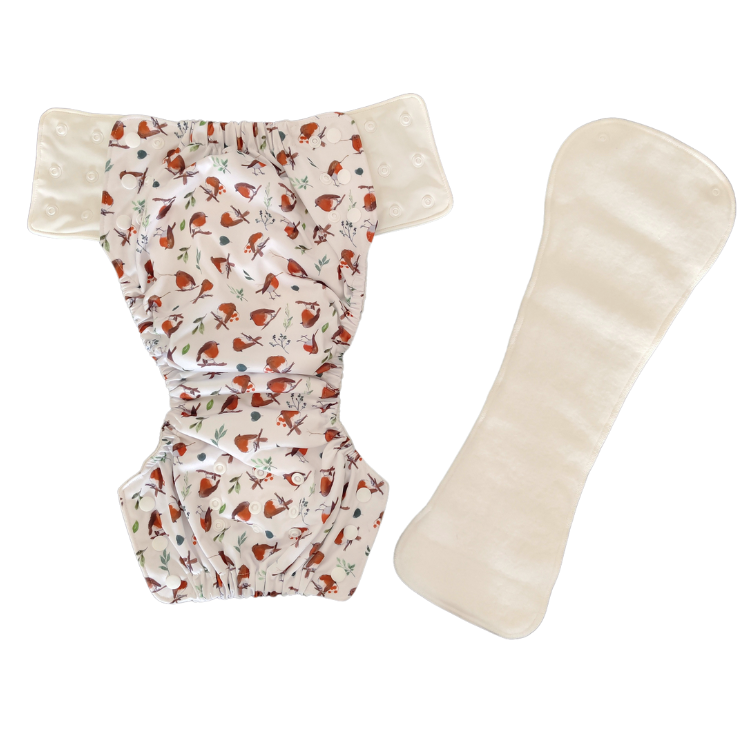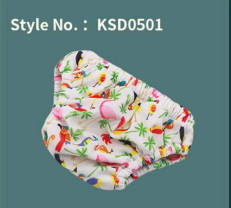- All
- Product Name
- Product Keyword
- Product Model
- Product Summary
- Product Description
- Multi Field Search
English
Are you tired of constantly buying disposable swim diapers for your little one? Reusable swim diapers could be the perfect solution. These eco-friendly alternatives not only save you money but also help reduce waste. In this post, we’ll discuss the benefits of reusable swim diapers, how they work, and why they’re a better choice for both your baby and the environment. You’ll also learn how to choose and use them effectively.

Reusable swim diapers are a great choice for both you and the environment. Here are some reasons why:
Eco-friendly: By using reusable swim diapers, you reduce the number of disposable diapers that end up in landfills. They’re an easy way to lower your environmental impact.
Cost-effective: Although reusable swim diapers may have a higher upfront cost, they save you money over time. With proper care, one diaper can last through many swimming sessions.
Comfortable and durable: Made from soft materials like PUL, neoprene, and polyester, these diapers are comfortable for babies and designed to hold up through multiple uses.
Perfect for pool use: They prevent accidents in the pool, containing solids without absorbing urine. You can relax knowing your baby is swimming safely.
Reusable swim diapers are designed to contain solids but don’t absorb liquids like regular diapers. This makes them perfect for the pool. Here's how they work:
Solid waste containment: These diapers are specifically made to keep solids contained. They don’t soak up water, making them ideal for swimming.
Materials used: Most reusable swim diapers are made from materials like PUL, neoprene, and polyester. These materials allow the diaper to be both waterproof and breathable.
Absorbency features: While reusable swim diapers are not absorbent, they are built to fit snugly and securely, preventing leakage during water play.
While both disposable and reusable swim diapers serve the same purpose, there are key differences:
Absorbency: Disposable diapers absorb liquids, which isn’t suitable for swimming. Reusable swim diapers, on the other hand, don’t absorb liquids and focus solely on keeping solids contained.
Reusability and convenience: Reusable swim diapers can be washed and reused, making them a more sustainable and convenient option in the long run.
Long-term savings: You’ll spend less money in the long run with reusable swim diapers. Instead of buying disposable ones each time, just wash and reuse.
Cleaner pools: Reusable swim diapers help maintain a cleaner pool environment by preventing solids from leaking into the water. They're great for keeping everyone safe and hygienic.

Choosing the right swim diaper for your baby is important for comfort and preventing leaks. Here are some key factors to keep in mind:
Age and size of your baby: Each diaper comes with a size chart based on your baby’s weight or age. Be sure to pick the one that fits snugly, as a good fit is crucial to prevent leaks.
Materials used: Reusable swim diapers are made from different materials like PUL, neoprene, and polyester. PUL is waterproof and breathable, while neoprene adds extra comfort and stretch.
Adjustable features: Look for swim diapers with adjustable snaps or Velcro. These features allow you to tailor the fit to your baby’s size, making it easier to keep the diaper snug but not too tight.
Fit matters: A proper fit is essential. Too loose, and it may leak; too tight, and it could cause discomfort.
Picking the right size can be tricky, but it's important for preventing leaks and ensuring comfort:
How to determine the right size: Always refer to the size chart provided by the brand. It's typically based on your baby’s weight or age.
Size charts and age ranges: Different brands may have slightly different charts, so make sure to check the specific one for your brand.
Leg and waist fit: Pay attention to how the diaper fits around your baby’s legs and waist. The elastics should sit snugly without leaving marks, and you should ensure there are no gaps.
There are many brands out there, but a few are known for their quality and comfort:
Charlie Banana: Known for its soft materials and adjustable fit.
Green Sprouts: Popular for its eco-friendly materials and comfortable design.
Nora’s Nursery: Offers great durability and a variety of cute designs.
What to look for: When choosing a brand, consider comfort, durability, and fit. Check for features like adjustable waistbands, reliable elastics, and high-quality materials that can withstand frequent use and washing.

Before using your reusable swim diaper, it’s important to get it ready:
Cleaning and drying: Wash the swim diaper before the first use. This helps remove any dirt or residue from packaging. Always ensure it’s completely dry before use.
Checking the fit: Make sure the diaper fits snugly around your baby’s waist and legs. Adjust the snaps or Velcro to achieve the best fit.
Adjusting the fit: You want the diaper to be secure but not too tight. Check the elastics around the legs and waist to avoid leakage and discomfort.
Ensure cleanliness: Check for any debris like sand or dirt inside the diaper. A clean diaper ensures no irritation or contamination.
Now that your swim diaper is ready, let’s put it on:
Step-by-step process: Open the diaper, position it under your baby, and pull it up between their legs. Fasten the waist using snaps or Velcro.
Snug fit around the legs and waist: Ensure there are no gaps at the legs or waist. The elastics should sit comfortably without causing any marks.
Avoid discomfort: The diaper should feel snug but not restrict your baby’s movement. It should also not be too loose, as it might leak.
Position the waistband correctly: The waistband should sit just below your baby’s belly button for maximum comfort and fit.
When it’s time to hit the pool, follow these tips:
Prevents solid waste from entering the pool: The swim diaper is designed to keep solids contained, so there’s no mess in the pool.
Checking the diaper: Keep an eye on the diaper while swimming. Ensure it remains snug and secure.
What to do if soiled: If your baby has an accident, remove them from the pool immediately and replace the swim diaper.
Urine passes without absorbing: Swim diapers allow urine to flow freely while containing solids. This ensures your baby stays comfortable during swim time.
After swimming, it’s important to clean and store the swim diaper properly:
Rinse and clean: After each swim, rinse the diaper thoroughly under cool water to remove any solids or debris.
Washing options: You can hand wash the diaper or use a gentle machine wash, following the care instructions.
Drying tips: Air dry the diaper for best results. If necessary, tumble dry on low heat to avoid damage.
Avoid harsh chemicals: Do not use chlorine bleach or fabric softeners, as they can damage the diaper’s material.
Proper storage: After cleaning, store the swim diaper in a cool, dry place to prevent bacterial growth or unpleasant odors.
Choosing the right size is essential for comfort and preventing leaks. Here’s what to watch out for:
Risks of leaks and discomfort: A diaper that’s too loose can cause leaks, while one that's too tight can be uncomfortable and leave marks on your baby’s skin.
Poor fit: If the swim diaper doesn’t fit correctly, it won’t be able to contain solid waste, defeating its purpose in the pool.
Regular diapers are not designed for swimming and can cause problems:
Not suitable for swimming: Regular diapers absorb too much water and become heavy, which can be dangerous for your baby.
Over-absorption and waterlogging: Regular diapers are not meant to handle water, and they can quickly become waterlogged.
Safety concerns: A waterlogged disposable diaper can increase your baby’s risk of drowning due to its heavy weight and reduced buoyancy.
Even the best swim diapers need regular checks to stay effective:
Importance of checking frequently: Always check the diaper to ensure it’s still secure and not leaking. Leaks can happen unexpectedly.
How often to check: Ideally, check the diaper every 30-60 minutes while in the pool, especially after your baby eats or drinks.
Cleaning your swim diaper properly is crucial for hygiene:
Cleaning and sanitizing: Always rinse and wash the swim diaper after each use. This prevents bacteria growth and unpleasant odors.
Leaving a soiled diaper too long: Don’t leave a soiled swim diaper on for too long. Prolonged exposure to waste can lead to irritation and hygiene issues.
To get the most out of your swim diapers, follow these tips:
Proper washing and drying techniques: Always follow the care instructions on the label. Wash the diaper after each swim session to remove any debris or chlorine.
Avoid harsh chemicals: Skip the chlorine bleach and fabric softeners as they can damage the fabric and reduce the diaper's effectiveness.
Rotating between multiple swim diapers: If you have a few swim diapers, rotate them so each one gets a chance to rest and dry fully between uses.
The number of swim diapers you need depends on how often you swim:
Recommended quantity: If you're frequenting the pool, having 3-4 reusable swim diapers should be enough.
Rotating swim diapers: While one is being washed, use another. This ensures your baby always has a clean one ready.
Eventually, all swim diapers will show signs of wear. Here's how to know when it’s time to replace them:
Signs of wear and tear: Look for holes, fraying elastic, or fading fabric. If the diaper no longer fits snugly or starts leaking, it’s time for a new one.
How long do they last?: With proper care, reusable swim diapers can last for several months to a year, depending on use.
Inspect for damage: Regularly check for damaged areas or weak spots around the leg elastics or waistband.
Why not make your baby look adorable while ensuring maximum protection?
Using swim trunks or a cute swimsuit: Pair your swim diaper with a fun swimsuit or swim trunks for extra protection and style.
Style options: Choose swimwear that complements the diaper, making sure it’s easy to change and comfortable.
Matching tips: For a complete look, pick coordinating colors or fun patterns that match the diaper’s design.
Reusable swim diapers are a convenient, eco-friendly, and cost-effective option for parents. They help reduce waste and save money in the long run, making them a great choice for pool activities. Switching to reusable swim diapers ensures worry-free swimming sessions for your baby. With their ease of use and long-term benefits, these diapers are an investment in both comfort and the environment. Parents should prioritize quality swim diapers for their baby's health and happiness.
A: No, reusable swim diapers do not absorb urine. They are designed to contain solid waste while allowing urine to pass through. This makes them ideal for swimming.
A: Yes, using both a disposable diaper and a reusable swim diaper provides extra protection, especially for longer periods in the water. It helps to manage leaks and accidents.
A: Yes, most reusable swim diapers are made from hypoallergenic materials. Always check the label to choose diapers that are suitable for sensitive skin to avoid irritation.
A: It’s recommended to check the swim diaper every 30-60 minutes. If it becomes soiled, change it immediately to prevent leaks and discomfort.
A: Swim diapers can be worn under regular clothing, especially during potty training. However, after swimming, you should switch back to a regular diaper for full absorbency.